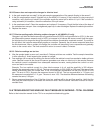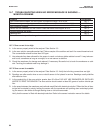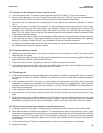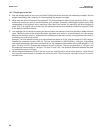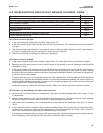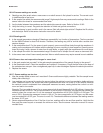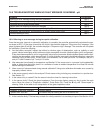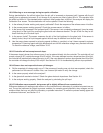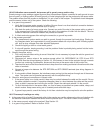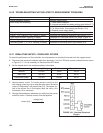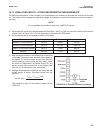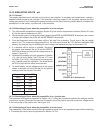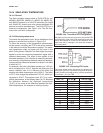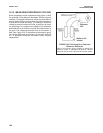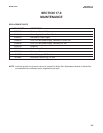
MODEL 54eA SECTION 16.0
TROUBLESHOOTING
16.9.6 Calibration was successful, but process pH is grossly wrong and/or noisy.
Grossly wrong or noisy readings suggest a ground loop (measurement system connected to earth ground at more
than one point), a floating system (no earth ground), or noise being brought into the analyzer by the sensor cable.
The problem arises from the process or installation. It is not a fault of the analyzer. The problem should disappear
once the sensor is taken out of the system. Check the following:
A. Is a ground loop present?
1. Verify that the system works properly in buffers. Be sure there is no direct electrical connection between
the buffer containers and the process liquid or piping.
2. Strip back the ends of a heavy gauge wire. Connect one end of the wire to the process piping or place it
in the process liquid. Place the other end of the wire in the container of buffer with the sensor. The wire
makes an electrical connection between the process and sensor.
3. If offsets and noise appear after making the connection, a ground loop exists.
B. Is the process grounded?
1. The measurement system needs one path to ground: through the process liquid and piping. Plastic pip-
ing, fiberglass tanks, and ungrounded or poorly grounded vessels do not provide a path. A floating system
can pick up stray voltages from other electrical equipment.
2. Ground the piping or tank to a local earth ground.
3. If noise still persists, simple grounding is not the problem. Noise is probably being carried into the instru-
ment through the sensor wiring.
C. Simplify the sensor wiring.
1. First, verify that pH sensor wiring is correct. Note that it is not necessary to jumper the solution ground and
reference terminals.
2. Disconnect all sensor wires at the analyzer except pH/mV IN, REFERENCE IN, RTD IN and RTD
RETURN. See the wiring diagrams in Section 3.3. If the sensor is wired to the analyzer through a remote
junction box containing a preamplifier, disconnect the wires at the sensor side of the junction box.
3. Tape back the ends of the disconnected wires to keep them from making accidental connections with other
wires or terminals.
4. Connect a jumper wire between the RTD RETURN and RTD SENSE terminals (see wiring diagrams in
Section 3.3).
5. If noise and/or offsets disappear, the interference was coming into the analyzer through one of the sensor
wires. The system can be operated permanently with the simplified wiring.
D. Check for extra ground connections or induced noise.
1. If the sensor cable is run inside conduit, there may be a short between the cable and the conduit. Re-run
the cable outside the conduit. If symptoms disappear, there is a short between the cable and the conduit.
Likely a shield is exposed and touching the conduit. Repair the cable and reinstall it in the conduit.
2. To avoid induced noise in the sensor cable, run it as far away as possible from power cables, relays, and
electric motors. Keep sensor wiring out of crowded panels and cable trays.
3. If ground loops persist, consult the factory. A visit from a technician may be required to solve the problem.
16.9.7 Process pH readings are noisy.
A. Is the sensor dirty or fouled? Suspended solids in the sample can coat the reference junction and interfere with
the electrical connection between the sensor and the process liquid. The result is often a noisy reading.
B. Is the sensor properly wired to the analyzer? See Section 3.3.
C. Is a ground loop present? Refer to Section 16.9.6.
101



